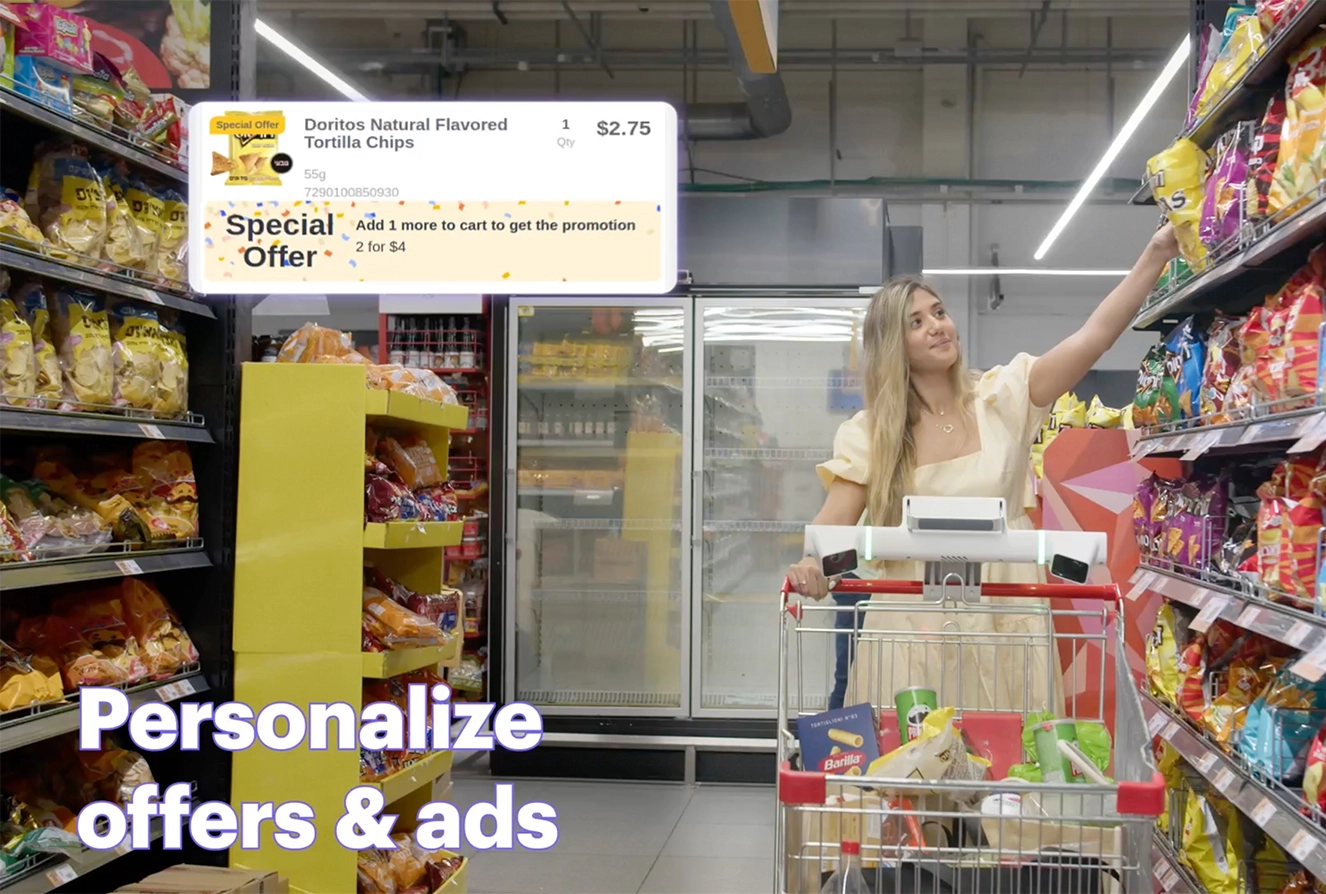
Retail media is advertising within a retailer’s sites or applications. It’s usually paid for by brands selling products through the retailer. For example, Tyson Foods might buy an ad on retail media for its popular Ball Park Franks hot dog.
While retail media is often used to drive immediate, measurable sales, it also extends to non-endemic sales. A consumer purchasing diapers might trigger an ad from a life insurance company reaching out to young families, or a furniture ad for store selling toddler beds.
This brings us directly to smart carts, and the intimate relationship between shoppers pushing the cart around the store while staring at a screen. In addition to the myriad of benefits smart carts deliver to retailers, they can open new retail media revenue sources.
Supermarkets carry tens of thousands of products, each competing with the other items on the shelves for sales. There are a dozen hot dog brands, in addition to Ball Park Franks, competing for shopper attention. They can form a competitive advertising marketplace within the store, each one bidding to display ads as consumers reach the refrigerator aisle where the hot dogs live.
Meanwhile, other products and brands are clamoring for attention through retail media. Deli meats, prepackaged frozen dinners, and every other item in the refrigerator section all compete with hot dogs through a bidding system to be the ad that is called on for the shopper.
Coupled with artificial intelligence, Smart Carts can make judgments about consumers and factor in company advertising bids to display ads that are most likely to result in a sale. Over time, as systems get to know customers and their shopping habits, they can choose to display highly effective ads that are likely to drive conversions.

Supermarkets can form a competitive advertising marketplace within the store, each one bidding to display ads as consumers reach the refrigerator aisle where the hot dogs live.
One of the most appealing elements of retail media is the high profit margin that it offers. Grocery items typically deliver 20% profit margins. Retail onsite media, in contrast, delivers a 70%-90% gross margin.
This high margin retail media can be used to subsidize low margin products and offset retail losses. For the first time, Walmart reported results for their advertising business. Walmart Connect made up an estimated 12% of the company’s overall profit.
As grocery stores build out their digital strategy and partner with advertising networks that exist across different smart cart platforms, they’ll open new revenue streams that improve profitability. That extra revenue source can help subsidize product pricing, and give them a competitive edge in their grocery business.


